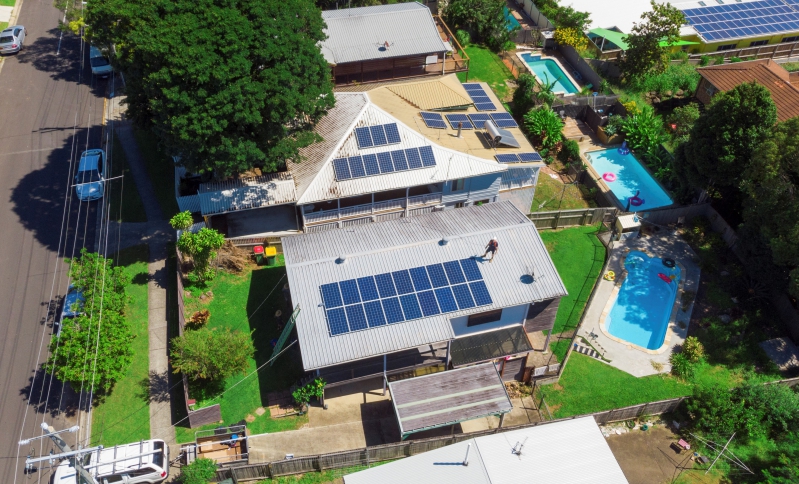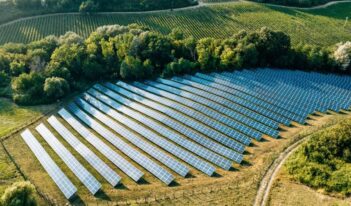
Australian regulators demonstrate the benefits and drawbacks of locally driven policy.
The land down under has turned solar panel regulation upside down.
Currently, Australia claims the title of global leader in rooftop solar energy. As many as one in four Australian homes contains rooftop solar panels. Such widespread adoption of rooftop solar energy is a major step toward cutting carbon dioxide emissions, and equips ordinary people with a tangible way to fight climate change.
What is the secret to Australian dominance in the rooftop solar market? It appears to be a function of effective, decentralized regulation.
Individual Australian states and territories have introduced solar energy target metrics. Many areas have also offered grants, loans, and rebates to offset the cost for interested citizens. For example, South Australia and New South Wales have pioneered these statewide incentive programs.
On the local level, community pledges have accompanied formal solar and clean energy goals. Across Australia, over 100 communities have pledged to meet aggressive clean energy targets. One municipality, Yackandandah, has pledged to be 100 percent renewable by 2022. So far, up to 55 percent of homes in the community have installed solar panels.
These local initiatives complement the federal government’s independent renewable energy targets, codified in the Renewable Energy (Electricity) Act of 2000.
Australian authorities have also streamlined regulations that otherwise would have impeded the installation of rooftop solar panels. In addition, they have strengthened regulations governing energy consumption.
Many state and territory regulators have simplified the permit process for homeowners seeking to install rooftop solar panels. In some regions across Australia, homeowners are now only required to obtain a permit if their home or building is designated as a “heritage preservation” site. Regulators also provide many of their installation inspections free of charge.
Australian regulators have used building energy codes to encourage homeowners to limit their energy use. Energy codes often specify minimum standards for residential energy use and sometimes provide target levels for still greater reductions in energy use. In many countries around the world, compliance with the requirements in a jurisdiction’s energy code is voluntary. But in Australia, the federal government has set “mandatory minimum energy requirements” for efficient energy use and made compliance with certain target metrics mandatory.
Beyond the federal energy standards and other minimum requirements codified in the National Construction Code, state and territory governments are free to change and adapt other parts of building codes related to construction requirements and permitting. As the New York Times reported, “streamlined building codes” have contributed to the simplified permit processes now commonplace across Australia.
But Australia’s path to an efficient rooftop solar energy model has not been without bumps in the road. Over the past few years, critics and policymakers have highlighted several areas in need of improvement.
An audit of the Clean Energy Regulator, Australia’s central authority responsible for reducing carbon emission, found sweeping safety issues with rooftop installations across the country. Over the past year, many homeowners have reported house fires resulting from improper installation.
Presently, only the state of Victoria requires a regulator to inspect a rooftop solar panel after it has been installed. This status quo persists because the federal government does not play a role in electrical safety across Australia; state and territory regulators control minimum standards.
In South Australia, homeowners have also complained of shutoffs. A solar cutoff regulation, implemented by the South Australia government in 2021, allows the Australian Energy Market Operator to turn off homeowners’ power temporarily during periods of low demand. On sunny days with little demand for power, an influx of solar energy may destabilize the electricity grid, placing communities at risk for blackouts.
The South Australian solar cutoff regulation seeks to prevent such an occurrence—and it has been met with intense criticism.
“This is regulatory over-reach,” one energy specialist reportedly commented in a recent interview. Other critics of the rule have argued it was implemented prematurely, allegedly without the benefit of any cost-benefit analysis and after only two weeks of debate by the government.
Despite these criticisms, Australia’s dominance in the rooftop solar energy market continues to grow. Installations increased 28 percent from 2019 to 2020, and they show no sign of slowing down in 2021.
Outside of Australia, countries around the world are struggling to realize rooftop solar energy’s full potential. In the United States, for example, only about 1 in 20 homes—or 6 percent of total homeowners—have installed solar panels on their roofs. The energy produced by these panels comprises just under 1 percent of total U.S. electricity.
Obtaining a permit can be burdensome and time intensive in the United States. Some states require people to procure multiple permits from varying agencies before rooftop solar installation can commence. To streamline the permit process, in June 2021, the U.S. Department of Energy launched SolarAPP+, a web-based application that is intended to help local municipalities “expedite their review and approval of residential solar installation permits.”
Time will tell whether this initiative boosts solar rooftop adoption in the United States. For now, the sun continues to shine on Australia.



